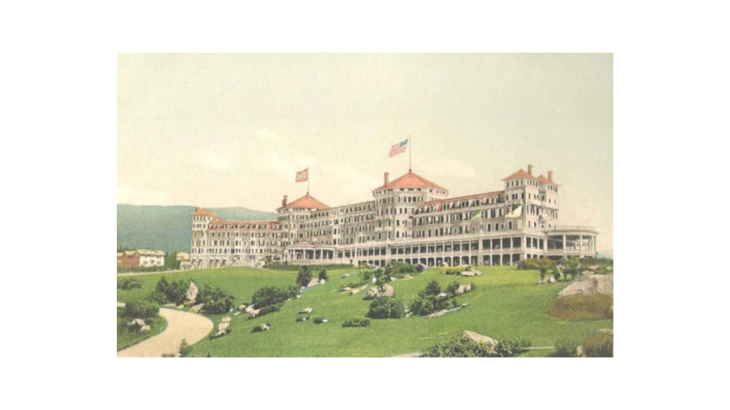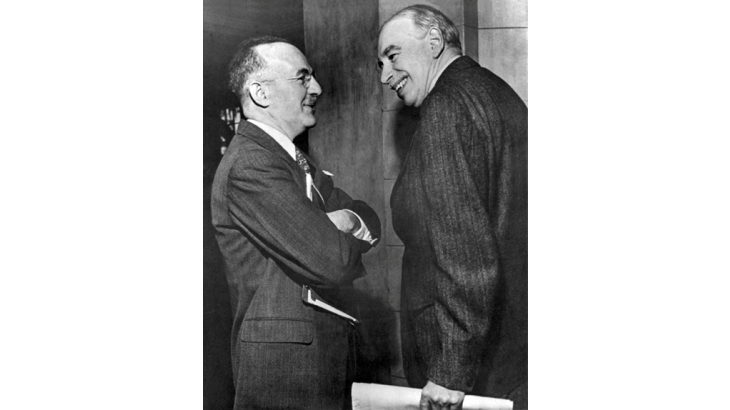- Home
- Publications et statistiques
- Publications
- 75 years of Bretton Woods: why nothing (...
Post n°122. On the occasion of the celebration of the 75th anniversary of the Bretton Woods Conference, this post reflects on the history of the international monetary system of the same name (1944 - 1971). The Bretton Woods system did not work as expected. Rather than cultivating the myth of a golden age, it is preferable to recognise the adaptability of monetary and financial multilateralism over time.

In response to balance of payments imbalances, volatility in international financial markets, and uncertainties about multilateral cooperation, calls for a "new Bretton Woods" are commonly heard. In this regard, the Bretton Woods Conference held in July 1944 must be distinguished from the "Bretton Woods system", which is generally considered to have ended with the US decision to suspend the gold convertibility of the dollar in August 1971. The influence of the Bretton Woods Conference did not end in 1971. It paved the way for the monetary and financial multilateralism that we still know today, notably through the creation of the IMF and the World Bank. However, there remains the idea that the period 1944-1971, when gold still served as a standard and fixed exchange rates were the norm, was the golden age of central bank cooperation and currency stability. Until 1971, the system was fully in line with the true spirit of the Bretton Woods Conference. Unfortunately, it was later led off track, and now needs to be revived. Recent research in economic history, however, shows how the Bretton Woods system did not work as originally planned at the 1944 conference that gave it its name. Rather than reiterate the myth of a golden age of monetary cooperation and currency stability, it is preferable to insist on the perpetual changes in monetary and financial multilateralism, in response to the incessant economic and geopolitical shocks since 1945.
The Bretton Woods break
The objective of the Bretton Woods conference was to break with the constraints that the gold standard imposed on individual countries's monetary policy, and with the trade and financial protectionism that followed the Great Depression of the 1930s. The idea was to gradually restore globalisation by recognising the new role played by the States, in response to the Great Depression, in the financing of the economy and financial and banking regulation.
This new international monetary system was very different from the previous ones. First, Bretton Woods officially authorised capital and exchange controls to prevent international financial movements that could destabilise the balance of payments. Second, the IMF was set up to provide liquidity to the national monetary authorities in the short term if needed, and to avoid balance of payments imbalances. Third, each country's exchange rates were set against the US dollar. The parity could be modified upon authorisation by the IMF's Executive Board, in the event of fundamental imbalances. Only the US dollar was convertible into gold (at USD 35 an ounce). Fourth, the minting of gold coins and the commitment of central banks (or the Treasury in countries without a central bank) to repay banknotes in gold was abandoned throughout the world. In 1944, the Bretton Woods system thus broke, in principle, the link between gold and the monetary policies conducted in individual countries. Until 1971, however, gold remained at the centre, as anchor of the international monetary system, because of its link to the dollar.

A system very different to the original plan
The aim of the Bretton Woods Conference was to build a post-war world between allies. The absence of certain countries (Germany, Japan) and the low representation of others (France was represented by its provisional government in Algeria), which would nevertheless be called to play a major role in the post-war monetary system, partly explains why the Bretton Woods system took an unexpected turn during the 1950s and 1960s. As for the USSR, which had been an important voice at the conference, it never signed the final agreements.
In the 1960s, most decisions on monetary system reforms and international liquidity (for example the creation of SDRs) were discussed and taken by a G10 which brought together the leading ten countries in the system (including Germany, Japan, and France). The influential powers were no longer the same as at the 1944 conference, and the IMF was no longer the only forum for negotiating international monetary affairs.
These changes in influential powers in the 1950s and 1960s – and the resurgence of continental Europe – modified the terms of multilateralism defined in 1944.In a recent book, E. Helleiner points out that the Bretton Woods Conference (attended by 44 nations) had primarily aimed at promoting the economic development of Third World nations, in particular through the United States’ willingness to extend the New Deal to other countries.
Breaking with the old order proved more difficult than expected, and not only in diplomatic relations. This is also evidenced by the resurgence of gold as an international reserve currency, in reference to pre-war practices, as shown by E. Monnet and D. Puy. The substitutability between gold and the dollar – in principle at the heart of the Bretton Woods system – was therefore imperfect. This contributed to a crisis of confidence in the dollar. As noted by M. Bordo and B. Eichengreen, the inflationary policy conducted by the United States from the mid-1960s was a major break with the system, which cast further doubts on the country's ability to maintain the gold convertibility of the dollar.
Currency instability
In addition, most countries did not use the possibility of devaluing their currency if necessary, including preventively. This led to a string of currency crises. Governments refused to resort to devaluation, because they considered it too harmful to national prestige, before being forced into it. From this point of view, the pound sterling – which remained the second most important reserve currency after the war – is a textbook case. In the 1960s, Britain continually asked the international community, and directly the United States, for help in maintaining the parity of the pound against the dollar. In 1961, co-operation between central banks (swaps, joint interventions through the gold pool, etc.) also began between the G10 countries in an attempt to stabilise the exchange rate between the dollar and gold in private markets. However, according to the study of M. Bordo, E. Monnet and A. Naef, this cooperation proved a failure in the absence of any stabilisation of the balances of payments. The pound sterling crisis had thus spread to the dollar. None of this had been anticipated at the Bretton Woods Conference.
The balances of payments adjustment problems remained highly significant and the Bretton Woods system was unable to contain them. This contributed to spreading the idea that flexible exchange rates would be more appropriate for the international monetary system and less costly for individual countries. The G7 and the European Monetary Snake were nevertheless created shortly after the end of the Bretton Woods system, in response to the observation that flexible exchange rates could not do without a new form of concertation and cooperation between nations.
The financial community will address the issue of Bretton Woods 75 years later at a conference held at the Banque de France on 16 July in the framework of the French Presidency of the G7. History suggests that the spirit of Bretton Woods is to be constantly renewed. Since its early years, monetary cooperation has continued to face challenges that were not anticipated by the speakers in July 1944.
Updated on the 25th of July 2024